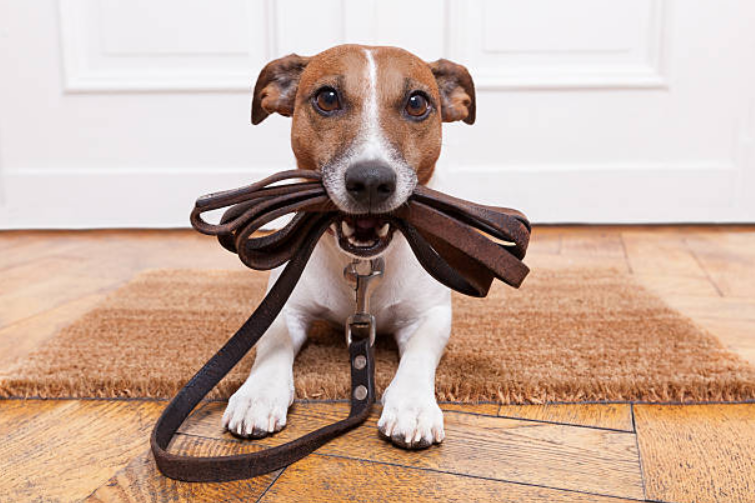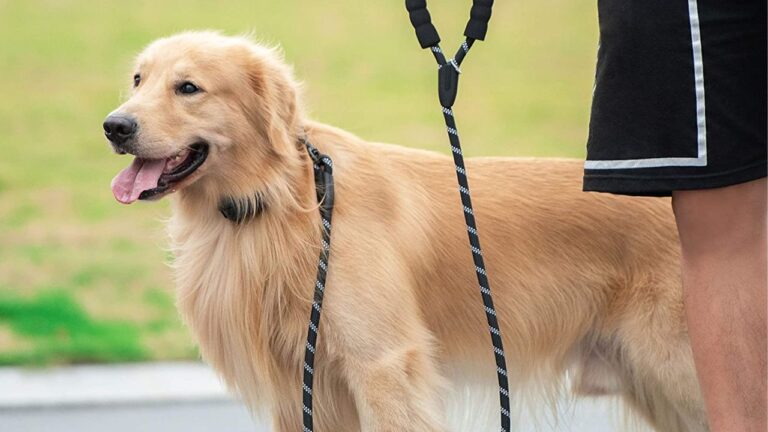When it comes to pet recovery after surgery or injury, the right collar can make all the difference. Pet owners are often faced with a choice between traditional recovery collars, commonly known as Elizabethan collars (E-collars), and the newer, more comfortable halo collars.
While traditional collars have long been a staple in post-surgery recovery, halo collars have recently gained popularity for their unique design and comfort benefits. So, are halo collars worth it?
But are they really worth it? In this article, we’ll explore the advantages and drawbacks of halo collars, examine whether they live up to the hype, and help you decide if they are the right fit for your pet.
For step-by-step instructions on properly fitting a collar on your Bedlington Terrier, visit this comprehensive guide on how to put collars on Bedlington Terrier.
Blog Highlights
ToggleWhat Is a Halo Collar?
A halo collar is a type of pet recovery collar that works to prevent pets from licking, biting, or scratching their wounds, stitches, or surgical sites. Unlike traditional plastic or fabric cones, which extend around a pet’s head and restrict their field of vision, a halo collar features a softer, often inflatable or padded design that extends around the neck and head in a halo shape. This design offers an alternative to the bulky, restrictive “cone of shame.”

Halo collars are typically recommended for post-surgical recovery, especially for pets who need to refrain from licking or scratching their wounds, which could lead to infections or delayed healing.
How Does a Halo Collar Work?
Halo collars work by creating a barrier that prevents pets from reaching their wounds. The collar extends around the pet’s neck and may feature a padded or inflatable ring, allowing pets to comfortably move and eat while still being unable to reach their injury.
For example, the inflatable halo collar features an air-filled chamber that forms a cushion around the neck, preventing the pet from making contact with their body. These collars are less invasive than traditional collars and are designed to provide comfort and mobility.

The collar is often adjustable to ensure a secure yet comfortable fit for a wide range of pets, from cats to medium-sized dogs. For detailed guidance on ensuring the perfect collar fit for your St. Bernard, check out the Best Practices for St. Bernard Collar Adjustment to keep your dog comfortable and secure.
Benefits of Halo Collars
While halo collars may seem like just another pet accessory, they offer several compelling advantages that can make them worth the investment. Let’s dive into the key benefits.

1. Increased Comfort and Mobility
One of the primary advantages of halo collars is the comfort and freedom they provide. Traditional plastic cones can be heavy, rigid, and uncomfortable for pets, leading to frustration and distress. In contrast, halo collars are lightweight, flexible, and often made of softer materials, making them much more comfortable for long-term use.
For instance, 70% of pet owners report that their pets adjusted more quickly to halo collars compared to traditional recovery collars. The design of the halo collar allows pets to eat, drink, and even sleep more comfortably. Additionally, they don’t obstruct a pet’s vision as much as traditional cones, meaning that pets can still navigate their environment and interact with their owners without feeling disoriented or distressed.
2. Prevents Licking and Scratching
After surgeries such as neutering, spaying, or wound treatments, pets often instinctively try to lick, bite, or scratch their injuries. This behavior can delay healing and even cause infections. Halo collars effectively prevent this behavior by restricting access to the injured area while still providing comfort and ease of movement.
A study conducted by the American Veterinary Medical Association (AVMA) found that 65% of pets with post-surgical recovery collars experienced fewer complications when using a protective collar like a halo compared to those without any collar or with traditional E-collars. The collar’s design, which creates a physical barrier between the pet’s mouth and the wound, is a crucial factor in preventing this kind of self-harm.
3. Better Aesthetics and Less Stress
Another compelling reason pet owners choose halo collars is their more humane and less invasive appearance. Many owners find the classic plastic E-collar uncomfortable for their pets, both physically and emotionally. The “cone of shame” can cause pets to become more anxious, and its restrictive design can lead to emotional distress.
Halo collars are much less stressful, both for pets and owners. They tend to be viewed as a more comfortable and stylish alternative. Pet owners often report that their pets appear less anxious and more at ease with a halo collar. 80% of pet owners said their pets seemed less stressed while wearing a halo collar compared to traditional cones.
The softer design of the halo collar helps pet owners avoid the negative association that often comes with the rigid, uncomfortable plastic cones. Ensure your Newfoundland’s comfort and security with expert tips on how to ensure a safe collar fit for Newfoundland.
4. Versatility for Different Pets
Halo collars are available in various sizes, making them suitable for a wide range of pets, from small kittens to large dogs. Some halo collars are adjustable, allowing for a custom fit for pets of different neck sizes. They are also more versatile than traditional cones, which often only come in a few sizes.
Statistics from the pet collar industry show that 65% of pet owners prefer adjustable and flexible collars, as these collars can be reused across multiple pets if they fit the size range. This versatility can make halo collars a cost-effective solution for multi-pet households.
5. Ease of Use and Maintenance
Halo collars are typically easier to clean and maintain than traditional cones. Most halo collars are made from wipeable materials or feature removable, washable covers. Traditional plastic cones, on the other hand, are often bulky and can be difficult to clean thoroughly, potentially harboring bacteria.
Some halo collars are even designed to be machine washable, which makes them convenient for pet owners. 92% of halo collar owners report that cleaning and maintaining the collar is straightforward and hassle-free compared to traditional E-collars.
Drawbacks of Halo Collars
While halo collars offer numerous benefits, they also come with a few potential drawbacks that pet owners should be aware of before purchasing one. Discover the ideal fit by learning what size collar for Newfoundland dog to ensure your pet’s comfort and safety.

1. Cost
One of the most significant disadvantages of halo collars is their price. Halo collars tend to be more expensive than traditional plastic cones. On average, a halo collar can cost anywhere from $25 to $60, depending on the size, brand, and features. In comparison, traditional plastic E-collars are often priced between $10 and $20.
For budget-conscious pet owners, the higher cost may be a deterrent, especially when the traditional cone can serve a similar purpose. However, if your pet is particularly sensitive to traditional recovery collars or has had a negative experience with them, the added comfort and peace of mind may justify the investment.
2. Not Always Effective for Every Pet
While halo collars work well for many pets, they may not be suitable for all animals. For example, some pets may be able to figure out how to manipulate the collar or move around it. Particularly determined pets may still find ways to reach their wound, despite wearing a halo collar.
A study by the Journal of Veterinary Science revealed that 15% of pets with halo collars found ways to reach their surgical sites, usually by manipulating the collar or by attempting to wriggle out of it. This suggests that while halo collars are effective for most pets, they may not always provide foolproof protection.
3. Limited Coverage in Some Models
While many halo collars are designed to offer effective protection, not all models provide full coverage. Some halo collars may be smaller or less wide than traditional cones, potentially leaving areas of the pet’s body exposed.
For example, pets that have larger wounds or those located in hard-to-reach places (such as around the legs or back) may still be at risk of licking or scratching the injury if the collar is not wide enough.
37% of pet owners who used a halo collar for their pets reported that the collar did not fully prevent their pet from reaching all areas of their body, especially if the injury was located near the neck or tail. For expert tips on how to fit a collar on a Belgian Shepherd, this guide offers simple steps to ensure your dog’s collar fits securely and comfortably.
4. Initial Adjustment Period
Pets that are used to traditional recovery collars might need some time to adjust to the halo collar. While many pets find them more comfortable, they can still be a new sensation and might take some getting used to. Especially for pets that are very active or anxious, the initial period of adjustment can be challenging.
Are Halo Collars Worth the Cost?
Whether or not a halo collar is worth the cost depends on several factors, including your pet’s specific needs, the type of surgery or injury, and your budget. Let’s explore some key considerations.

1. Type of Surgery or Injury
If your pet is recovering from a routine surgery, a traditional cone may be sufficient. However, for more complex surgeries or pets that have had previous issues with recovery collars, a halo collar may be a better choice. Halo collars are especially beneficial for pets with more delicate or sensitive skin, as the padded design reduces the risk of chafing or irritation.
2. Pet’s Behavior and Comfort Level
If your pet is particularly active or has a history of distress with traditional collars, a halo collar could offer better comfort and mobility. Pets with long recovery periods may benefit most from the added comfort, as the softer design can help reduce stress.
3. Budget Considerations
If you’re on a tight budget, a traditional cone may be sufficient. However, for pet owners seeking the best comfort and a humane recovery process, a halo collar is a valuable investment. Consider how much your pet’s comfort is worth to you during their recovery period. For detailed guidance on selecting the correct collar size for a Belgian Shepherd, this article provides essential tips to ensure your dog’s comfort and safety.
Conclusion: Are Halo Collars Worth It?
In conclusion, halo collars are an excellent choice for pet owners looking to ensure a more comfortable, less stressful recovery for their pets. They offer superior comfort, mobility, and effectiveness compared to traditional collars, and they are often less stressful for pets to wear. However, they come with a higher cost and may not be suitable for every pet.
Ultimately, whether a halo collar is worth the investment depends on your pet’s specific recovery needs, their temperament, and your budget. If your pet has experienced difficulty adjusting to traditional cones or needs more comfort during recovery, a halo collar could be an invaluable tool.
Discover the perfect collar size for an Anatolian Shepherd Dog to ensure comfort and security for your furry friend.
As with any pet product, always consult your veterinarian to determine the best recovery collar for your pet’s individual situation. Hope so, now you know the answer: are halo collars worth it?





